Key takeaways:
- API testing tools validate communication and performance between software components, aiding in error detection and improving overall code confidence.
- Common tools like Postman, SoapUI, and JMeter cater to various testing needs, from functional checks to performance testing.
- Challenges in API testing include understanding documentation, dealing with inconsistent responses, and managing test data effectively.
- Automation and up-to-date documentation greatly enhance testing efficiency, while community support can provide valuable resources and insights.
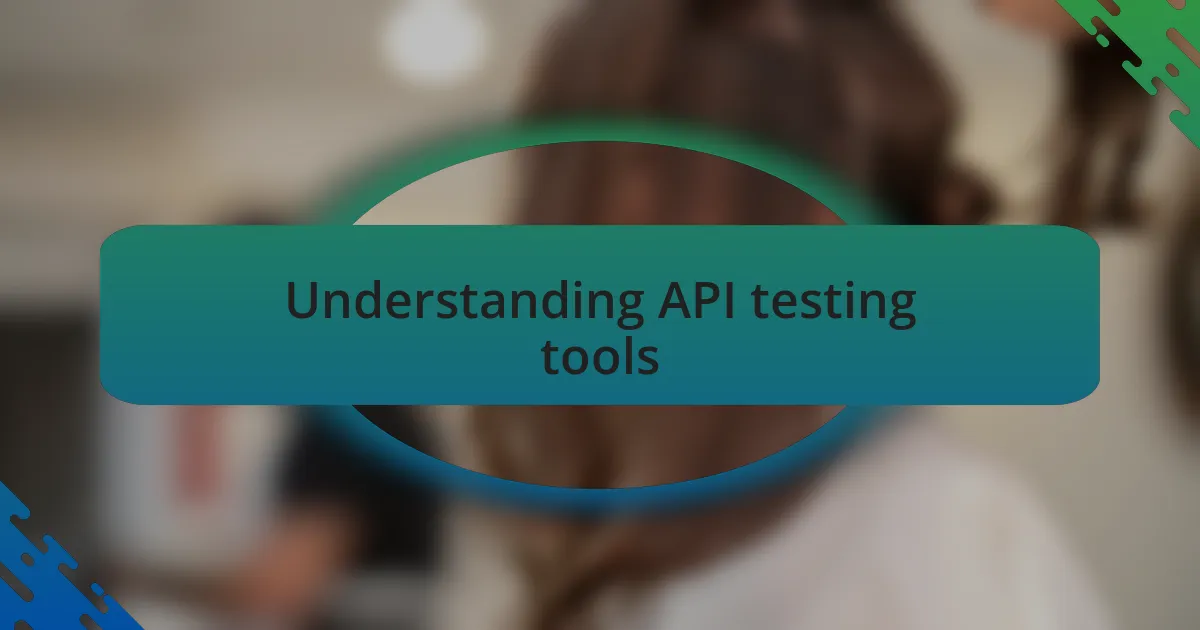
Understanding API testing tools
When diving into the world of API testing tools, it’s essential to grasp their role in ensuring seamless communication between software components. I often reflect on my first experience with an API tool—it felt like unlocking a door to a new realm, where I could validate that the data intended for my application was not only sent but also received correctly. The thrill of seeing the response validate my assumptions was priceless.
APIs are essentially the bridges that allow applications to interact. When I first started testing them, I quickly learned that a robust API testing tool doesn’t just check if the API works; it dives deeper into response times, error codes, and security issues. Have you ever wondered how a slight change in a request could lead to significant discrepancies? My early days of experimenting with various tools taught me that even minute details matter—logging those variations helped me expand my understanding of how APIs function under different scenarios.
Embracing API testing tools can also evoke a sense of empowerment. Every time I executed a test that uncovered a hidden bug or a performance flaw, I felt like a detective uncovering clues. It’s not just about finding problems; it’s about building confidence in your code. So, when you think about the tools available, consider how they can elevate your development process and save you from potential post-deployment headaches.
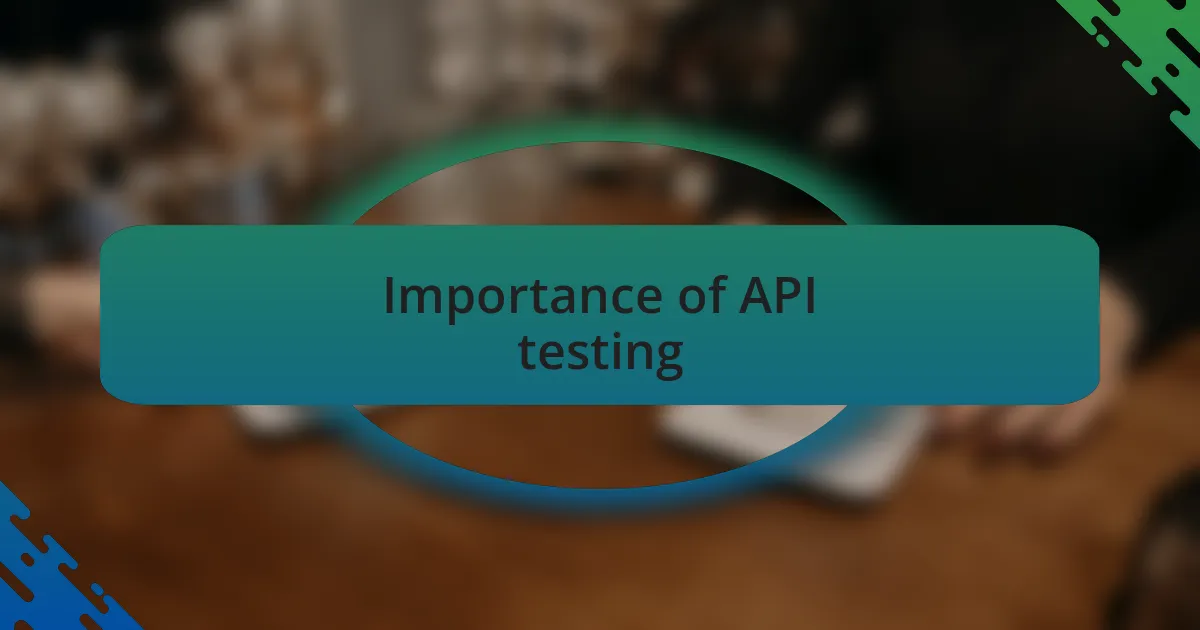
Importance of API testing
API testing plays a crucial role in ensuring that different software components communicate effectively. I vividly remember a time when a minor bug in an API caused a major feature in my application to malfunction. That experience taught me that even small discrepancies can have a widespread impact, highlighting the need for thorough testing. Can you imagine launching a product only to discover it crashes because of an overlooked API issue?
When I think about it, the importance of API testing goes beyond just functional checks. It encompasses aspects like performance and security, which are vital for user satisfaction. I recall the relief I felt when a performance test revealed that my API could handle twice the expected load. That realization not only boosted my confidence but also reassured stakeholders that the application could scale without issues.
Moreover, API testing fosters collaboration among teams. I’ve seen firsthand how developers and testers can come together, sharing insights and addressing problems rooted in the API early in the development cycle. This teamwork leads to better product quality and a smoother deployment process—who wouldn’t want that kind of synergy in a project?

Common API testing tools
When I think about common API testing tools, Postman immediately comes to mind. I remember the first time I used it to quickly test a RESTful API endpoint; the user interface is so intuitive that it felt like I was chatting with the API rather than wrestling with it. Postman not only allows for easy request creation, but it also supports automated testing through collections, making it a favorite among developers and testers alike—who doesn’t appreciate efficiency?
Another tool that I frequently rely on is SoapUI. Its robust features, particularly for testing SOAP and REST APIs, really saved me during a project where we had to validate complex XML responses. I was somewhat intimidated by the learning curve at first, but once I got the hang of it, I realized how powerful it was for ensuring comprehensive API functionality. Have you ever encountered a tool that seemed daunting but turned out to be a game-changer? SoapUI was definitely that for me.
Then there’s JMeter, which I often use for performance testing. The first time I configured it to simulate thousands of API requests, I was struck by how crucial it is to understand load testing’s impact on user experience. I can still feel the anticipation as I waited for the results to see if our API could handle the pressure. Those moments of tension remind me just how pivotal it is to choose the right tool for the job, and it’s truly fascinating to see how different tools can meet various testing needs.
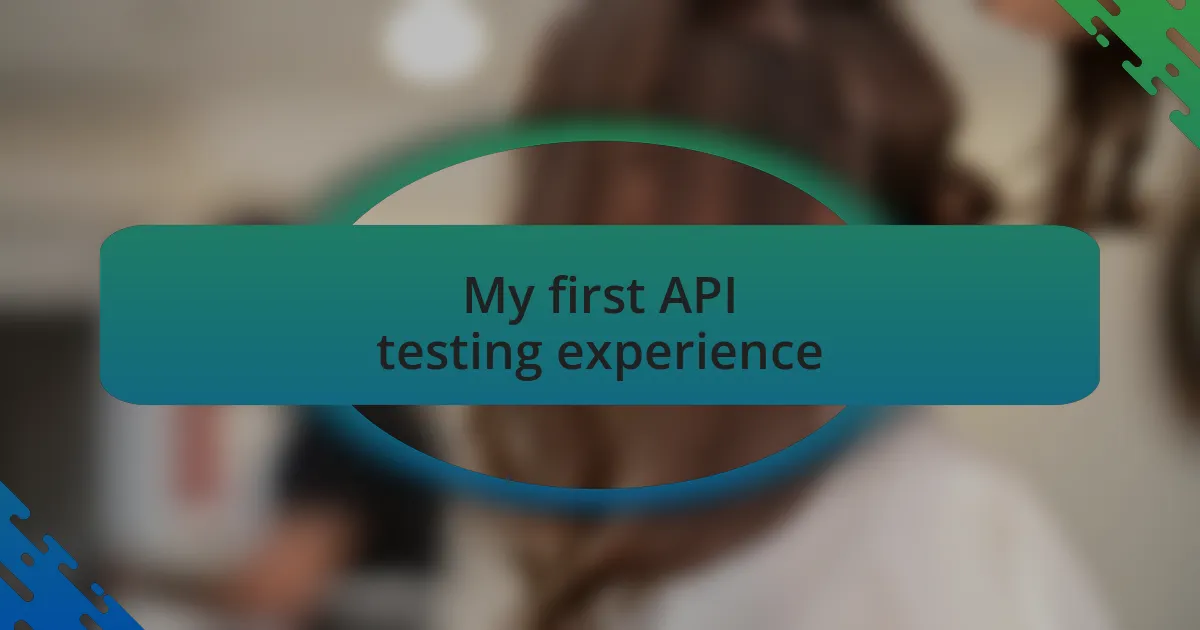
My first API testing experience
The first time I ventured into the world of API testing, I remember feeling a mixture of excitement and uncertainty. I was tasked with validating a simple JSON API, and even though it seemed straightforward, I was both eager to learn and anxious about making mistakes. As I sent my first request and received a clear response, it felt like a small victory—like I had unlocked a new skill that opened up a realm of possibilities.
I was using Postman, and I was fascinated by how quickly I could iterate on my tests. I distinctly recall the thrill when I learned to write assertions to validate response data. It was a game-changer to realize that I could automate checks and catch issues early. Have you ever experienced that moment when everything just clicks? That’s exactly how I felt—empowered and equipped to dig deeper into API functionality.
I can’t forget the moment I faced an API that wasn’t behaving as expected. The frustration was palpable as I scoured through logs and responses, feeling like a detective on a mission. It taught me the importance of persistence in testing; every challenge is an opportunity for growth. Did you know that some of the best insights come from troubleshooting? That experience not only sharpened my testing skills but also ignited a passion for API quality assurance that stays with me to this day.
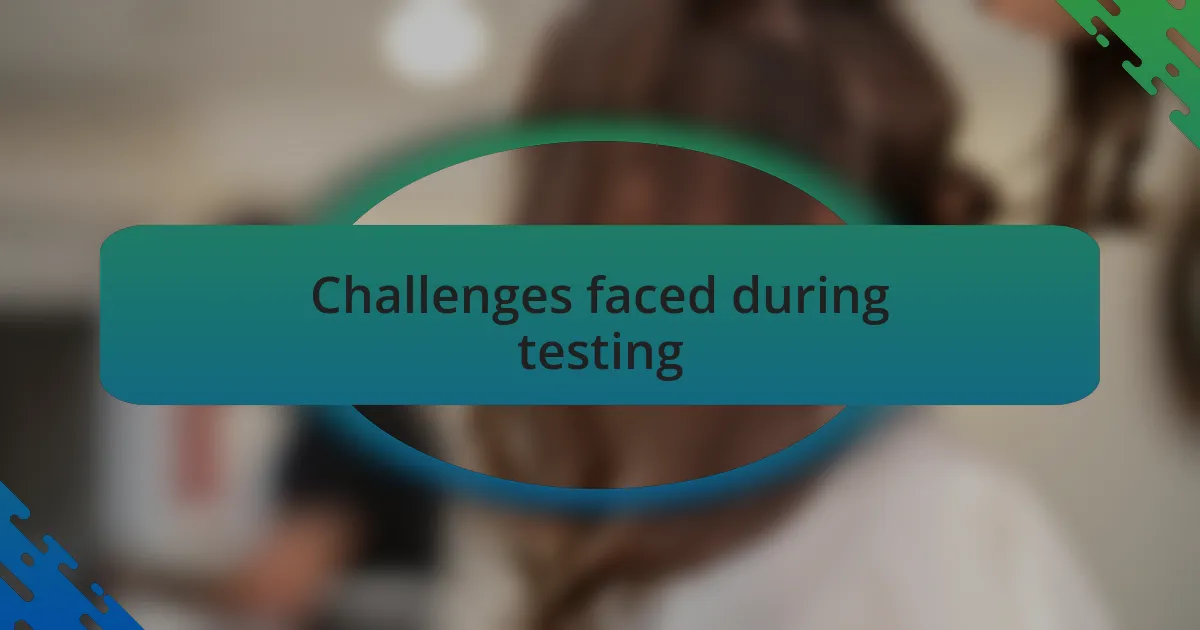
Challenges faced during testing
The first major challenge I encountered during API testing was understanding the documentation. I remember staring at the API specs, feeling lost amid technical jargon and unfamiliar terms. Have you ever had a moment where you thought, “Is this written in English?” It took time, but I learned to decode the information, which ultimately enhanced my testing efficiency.
Another hurdle that stands out was dealing with inconsistent responses. There were times when the API would return a 200 status code, but the data inside the response wasn’t what I expected. The confusion this caused was frustrating—like opening a beautifully wrapped gift only to find it empty inside. This experience taught me to not just rely on status codes but to deeply validate the response content as part of my testing process.
Lastly, managing test data presented its own set of challenges. I often found myself wrestling with setting up different environments and the right data states for testing. I remember spending hours just to replicate issues, all the while thinking, “There has to be a more efficient way!” This struggle pushed me to develop better strategies for organizing and automating my test data, which ultimately improved my overall testing workflow.
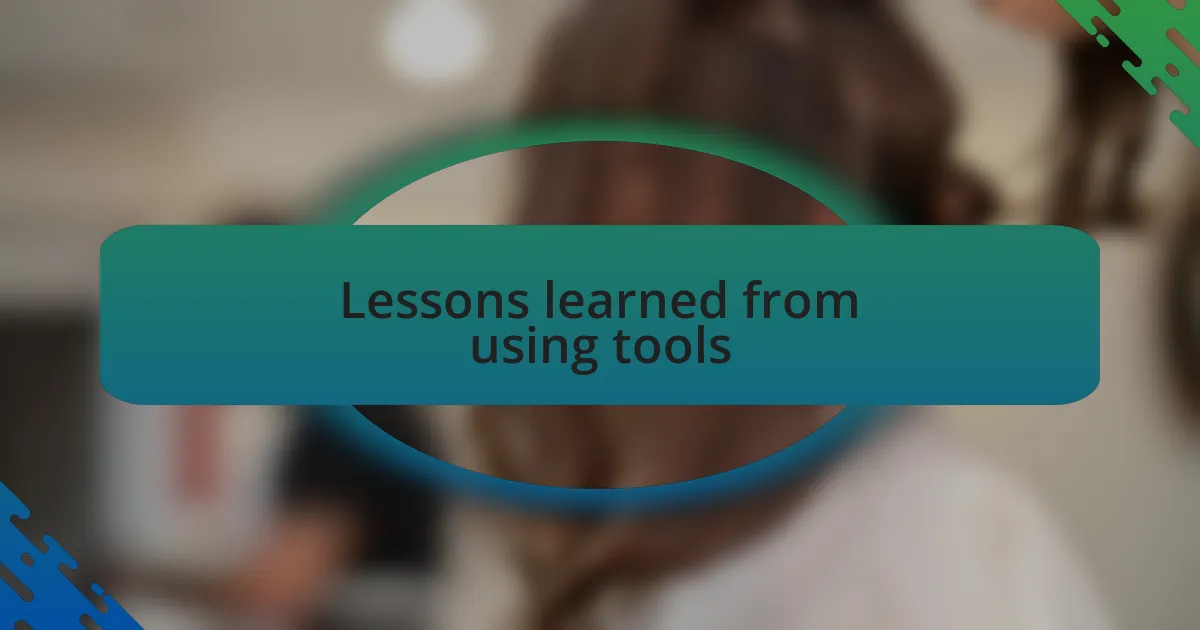
Lessons learned from using tools
One important lesson I learned from using various API testing tools is the value of automation. Initially, I was skeptical about its effectiveness. However, after setting up my first automated test suite, I realized how much time I could save. I remember the relief I felt when I could run multiple test cases with a single click instead of manually testing each one—what a game-changer!
Another insight I gained is the significance of keeping documentation up to date. I once worked on a project where the API documentation lagged behind the actual implementation. It felt like trying to navigate through a maze without a map. This experience reinforced the idea that well-documented APIs are crucial for efficient testing. Good documentation not only eases the learning curve for testers but also helps identify issues earlier in the development cycle.
Lastly, I’ve come to appreciate the community around API testing tools. Early on, I hesitated to seek help, thinking I should figure things out alone. But after joining a forum and sharing my experiences, I discovered a wealth of knowledge and support. The sense of camaraderie was uplifting, reminding me that collaboration can significantly enhance one’s skills. Have you ever hesitated to reach out for support? Trust me, there’s a lot to gain when you connect with others on the same journey.